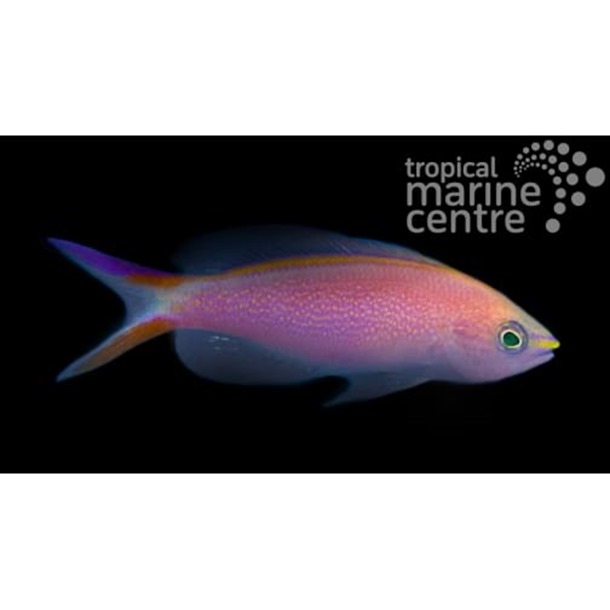Princess Anthias
You will earn 53 Points
The Princess Anthias is a gorgeous deepwater anthias sure to be a prized addition for the devoted anthias keeper. The Princess Anthias sports a rich, sapphire pink colouration beautifully accentuated with golden-yellow flecks that immediately captures the eye. The careful observer will notice that the golden-yellow spots appear on each scale (except those on the ventrum) as though meticulously hand-painted by a piscine Picasso. With its vibrant jewel-like colouration, it's easy to see why the Princess Anthias achieves royal status among anthias aficionados.
The Princess Anthias initially may be difficult to acclimate to a quarantine system. The Princess Anthias are collected in waters of up to 228 feet deep and prefer low to moderate lighting conditions initially but will over time adapt to aquariums with stronger lighting. The Princess Anthias may also find shipping stressful contributing to their difficulty in acclimating. Once the Princess Anthias has completed its quarantine period and are sturdy enough to introduce to your display aquarium, they will thrive and become peaceful members of your aquarium with other peaceful fish. The Princess Anthias should be introduced into your aquarium before other more active, territorial fishes so they can settle in with limited stress.
Members of the Anthias group all share the trait of being hermaphroditic. If a dominant male perishes, the largest female of the group can morph into a fully functioning male to take its place. To recreate habitat for the Princess Anthias, aquascape liberally with live rock, creating numerous caves and other hiding places. Be sure to maintain open areas and plenty of surface area for proper water oxygenation. For a dramatic aquarium display, consider a steep reef profile, perhaps with a slight overhang to provide additional shelter as well as diffused lighting.
Once acclimated to a new aquarium, the Princess Anthias do best when fed a varied diet of enriched frozen mysis shrimp, enriched frozen brine shrimp, and over time may eat high-quality flake foods offered in small quantities throughout the day. An attached refugium cultivating copepods and amphipods provides a steady supply of nutritious live food sure to keep this active planktivore content.
